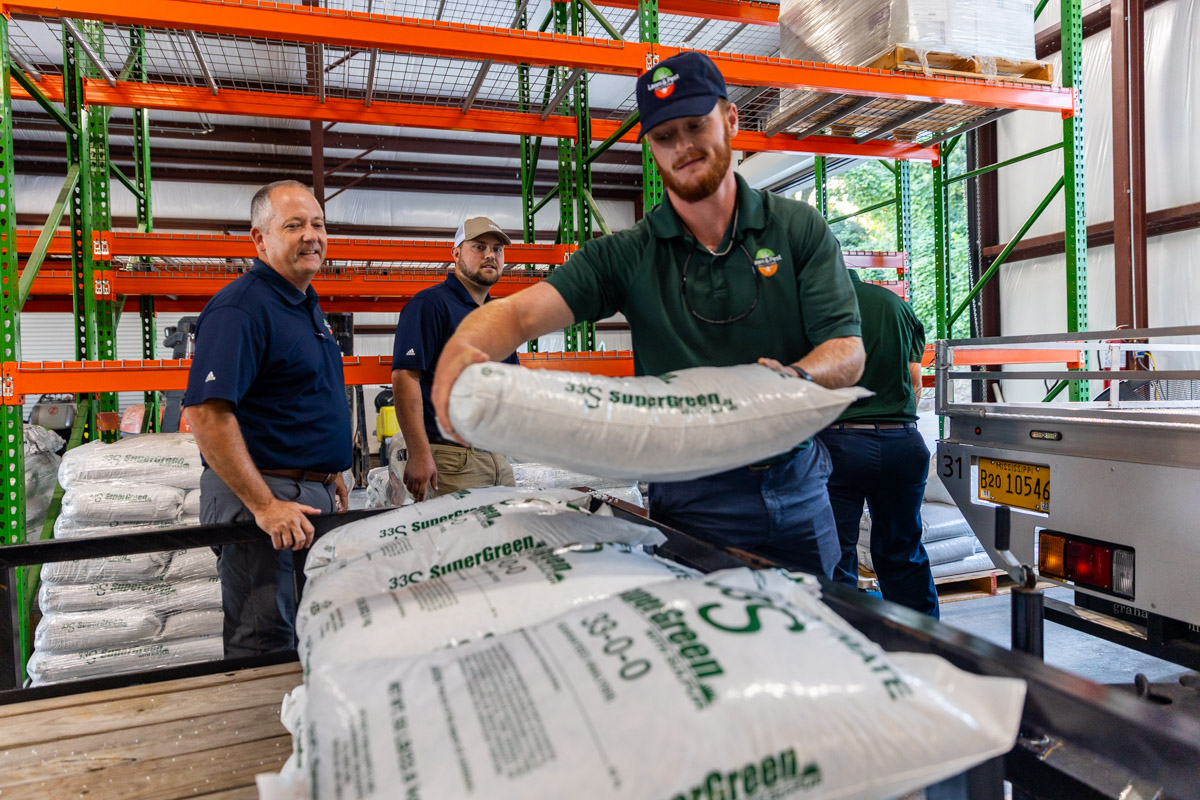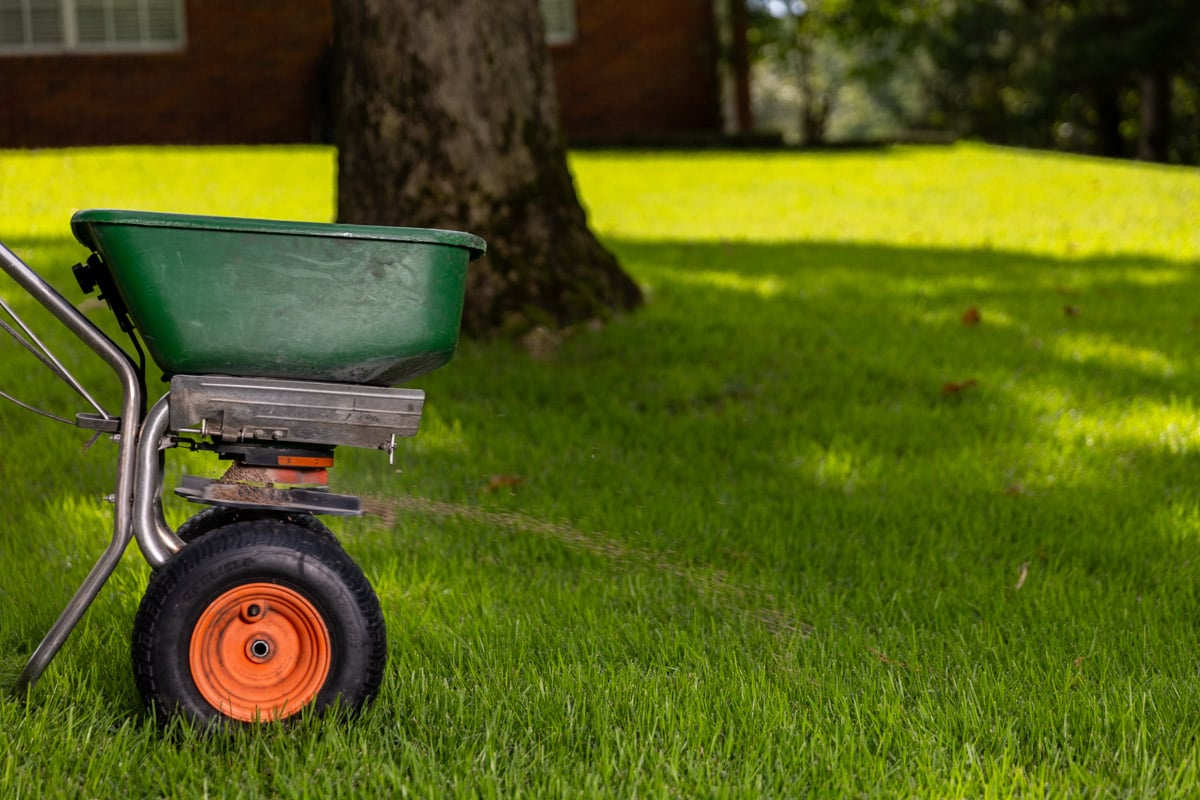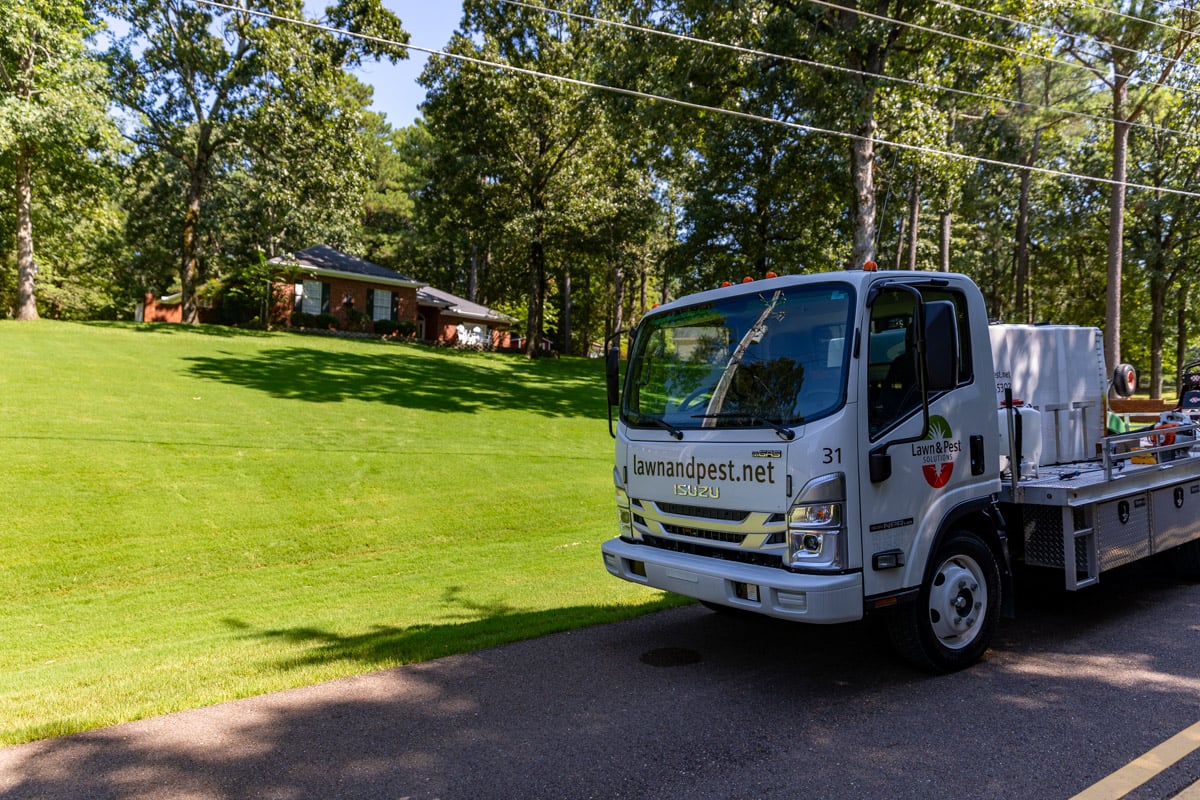
Slow-Release vs. Quick-Release Fertilizers: Pros and Cons for Memphis Lawns
If there’s one thing about lawn care that can be confusing, fertilization is it.
Experts always recommend you read the label first, but have you ever looked at a lawn fertilization label? They read like they are written by chemists and would put you right to sleep if you started scanning them.
As you look at a fertilizer label, you’ll see that each bag will provide varying ranges of numbers. Particularly they list three key numbers: Nitrogen (N), Phosphorus (P), and Potassium (K) in that order. Using the right blend of N-P-K for your lawn takes an understanding of the specific needs of your turf and soil. But you might be wondering how much of each your lawn needs.
Fertilizers also come in liquid or granular form, which means you can spray them or spread the pellets across your lawn. While it’s nice to have options, you might be scratching your head wondering which one of these formulations you need and when are the best times to use them.

As if you didn’t already have quite a few questions, fertilizers also come in slow-release and quick-release lawn fertilizer formulations. Each of these products has its specific benefits and uses based on a variety of factors that can impact your lawn.
Let’s dive into lawn fertilization on Memphis lawns, discussing the differences between granular lawn fertilization and liquid, as well as slow-release lawn fertilizer and quick-release lawn fertilizer, so you can better understand how these products work and what might be best for your lawn.
Slow-Release Lawn Fertilizer Vs. Quick-Release Lawn Fertilizer
Now that you have all kinds of lawn fertilizer terms in your head, let’s break them down.
Granular and liquid fertilizers are two common forms of lawn fertilizers, each having their own set of characteristics and advantages.
Granular lawn fertilizers come in the form of small granules that look like pellets. They are typically uniform in size and shape.
While liquid fertilizers are typically more quickly absorbed and granular fertilizers are more slowly absorbed, you’ll find many formulations exist.
Now, let’s look at the differences between slow-release and quick-release lawn fertilizers.
Quick-Release Lawn Fertilizers
Quick-release lawn fertilizers, as the name suggests, are designed to provide an immediate burst of nutrients to plants. Typically, they contain high concentrations of essential elements like nitrogen, phosphorus, and potassium (N-P-K), which are readily available for plant uptake.
The rapid boost of nutrients can be good for addressing deficiencies. These products are absorbed very quickly by the lawn. This type of fertilizer is typically more water-soluble, making it dissolve faster in the soil. You should start to see some lawn growth almost immediately with quick-release fertilizer.
But since these products dissolve rapidly, there is a higher risk of nutrient runoff. Also, their effects are short-lived compared to their slow-release counterparts.

There are times when quick-release lawn fertilizer comes in handy. For instance, if you just planted a lawn and need that quick green up and want to push top growth to help block weeds from growing in, that’s an excellent time for quick-release fertilizer. Newly hydroseeded lawns can benefit from quick-release fertilizer in the beginning stages of growth as well.
Once your lawn is established, however, using quick-release fertilizer can force too much growth too fast. This overabundance of nitrogen can stimulate rapid shoot growth while slowing down root growth and increasing the need for more frequent mowing, which can result in less stress tolerance and slower recovery from any injury to the grass. Too much nitrogen can also result in thinner leaf tissue, which increases moisture loss and creates a greater need for water.
Slow-Release Lawn Fertilizers
Slow-release lawn fertilizers provide a steady supply of nutrients over an extended period of time.
As water-insoluble formulations, these fertilizers are designed to break down slowly, releasing nutrients gradually into the soil. They often come in the form of coated granules, which dissolve gradually in response to environmental factors like temperature and moisture. This slow and steady approach ensures a sustained feeding of plants over weeks or even months.
A steady supply of nutrients can provide consistent lawn growth and health. These products are not as prone to leaching, minimizing nutrient runoff, and they require less frequent applications. But they won’t provide an instant green-up effect on your lawn like quick-release fertilizers do.
Blends of Both Slow-Release and Quick-Release
Many times, lawn care professionals will use blends of slow-release lawn fertilizers and quick-release lawn fertilizers on lawns to provide the best of both types, since they deliver both immediate and long-term results.

For instance, during summer months, you might find your lawn care company uses 25% quick-release and 75% slow-release fertilizer to provide some instant green on established lawns but avoid large spikes in growth so mowing heights remain stable.
But for a new lawn, you might find lawn care companies using 50% or 60% quick-release to help the lawn get established and 40% slow-release so the grass continues to receive nutrients over time.
Lawn care professionals will not charge a different price whether they use quick-release or slow-release fertilizers. They’ll come up with a program that is based on your Memphis lawn’s specific needs to prevent weeds and keep your lawn healthy.
There Are Many Lawn Care Fertilization Options For Your Memphis Lawn
Lawn fertilization can be complicated.
Knowing what your turf needs at its specific stage of growth can be challenging.
Both slow-release and quick-release lawn fertilizers have their place in your lawn care professional’s toolkit, each offering distinct benefits and drawbacks. When it comes to nourishing your lawn, understanding the unique needs of your grass and the local environmental conditions help experts make the best choice for your yard.
Does it seem like a lot to comprehend? Let Lawn & Pest Solutions help. It’s our job to take care of your lawn in the best way possible. We know what your lawn needs and when and can address those nutrient needs at the right time with the right products.
Want to learn more about what Lawn & Pest Solutions can do for your Memphis and North MS lawn? Get started today with a free quote. We’ll review your options together so you can make a great choice. Then you can sit back and enjoy your lawn.
